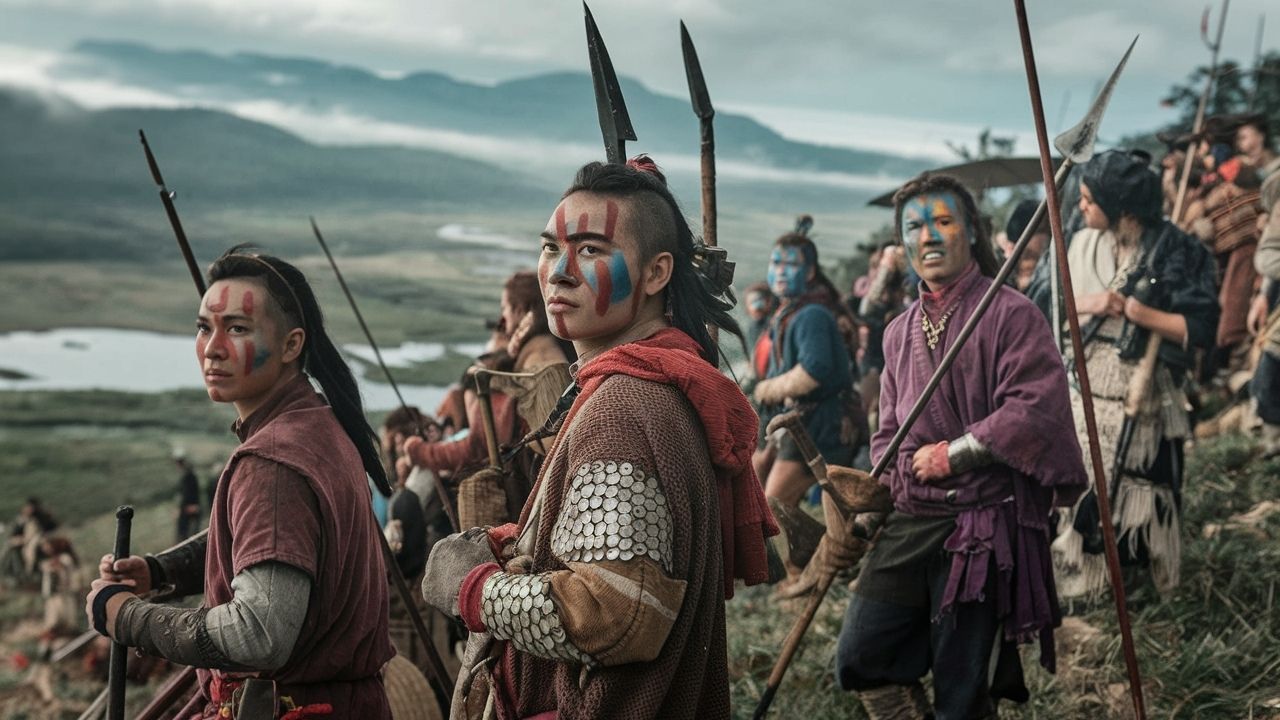
What was the Ngiao Rebellion? The Ngiao Rebellion was a significant uprising in the late 19th century in Thailand. It involved the Ngiao people, who were ethnic Shan from Burma, rebelling against the Siamese government. This conflict was fueled by cultural tensions, economic hardships, and political dissatisfaction. The rebellion saw fierce battles, strategic maneuvers, and notable leaders who played crucial roles. Understanding this rebellion provides insight into the historical dynamics of Southeast Asia, the struggles of ethnic minorities, and the impact on modern Thai society. Dive into these 25 facts to uncover the key events, figures, and outcomes of this pivotal moment in history.
Key Takeaways:
- The Ngiao Rebellion, led by the Ngiao people in 1889-1890, highlighted ethnic tensions and inspired future generations to advocate for their rights and autonomy.
- The rebellion's legacy continues to shape modern Thai policies towards ethnic minorities and remains a symbol of struggle for justice in Southeast Asia.
The Ngiao Rebellion: A Brief Overview
The Ngiao Rebellion, a significant event in Southeast Asian history, often gets overlooked. This uprising, rooted in cultural and political tensions, offers a fascinating glimpse into the region's past. Here are some intriguing facts about the Ngiao Rebellion.
-
The Ngiao Rebellion occurred in the late 19th century, specifically between 1889 and 1890.
-
This uprising took place in northern Thailand, primarily in the Chiang Mai region.
-
The rebellion was led by the Ngiao people, also known as the Shan, an ethnic group from Myanmar.
-
The Ngiao people were dissatisfied with the heavy taxation and forced labor imposed by the Siamese government.
-
The rebellion was partly fueled by the desire to preserve their cultural identity and autonomy.
Key Figures and Events
Understanding the main players and pivotal moments helps paint a clearer picture of the rebellion's dynamics.
-
Khun Sa, a prominent Ngiao leader, played a crucial role in organizing the rebellion.
-
The Siamese government, under King Chulalongkorn (Rama V), was determined to suppress the uprising.
-
The rebellion began with a series of coordinated attacks on Siamese outposts and government officials.
-
One of the most notable battles occurred at the town of Phayao, where the Ngiao forces initially gained the upper hand.
-
The Siamese army eventually regrouped and launched a counteroffensive, leading to several brutal confrontations.
Cultural and Social Impact
The Ngiao Rebellion had far-reaching consequences beyond the immediate conflict. It influenced the region's cultural and social landscape in various ways.
-
The rebellion highlighted the ethnic tensions between the Ngiao people and the Siamese authorities.
-
It also brought attention to the harsh conditions faced by many ethnic minorities under Siamese rule.
-
The rebellion led to increased efforts by the Siamese government to integrate the northern territories more effectively.
-
The conflict resulted in significant loss of life and displacement of many Ngiao families.
-
Despite the rebellion's failure, it inspired future generations to continue advocating for their rights and autonomy.
Legacy and Historical Significance
The Ngiao Rebellion's legacy continues to be felt today, both in historical scholarship and in the collective memory of the region's people.
-
The rebellion is often cited as an example of resistance against colonial and imperial forces in Southeast Asia.
-
It has been the subject of numerous historical studies, shedding light on the complexities of ethnic relations in the region.
-
The rebellion is commemorated in various cultural expressions, including literature, music, and traditional storytelling.
-
Some historians argue that the rebellion played a role in shaping modern Thai policies towards ethnic minorities.
-
The Ngiao Rebellion remains a symbol of the struggle for justice and self-determination for many ethnic groups in Southeast Asia.
Interesting Tidbits
Here are some lesser-known facts that add more depth to the story of the Ngiao Rebellion.
-
The Ngiao people used guerrilla warfare tactics, taking advantage of their knowledge of the local terrain.
-
Women played a significant role in supporting the rebellion, often acting as messengers and providing supplies.
-
The rebellion had a ripple effect, inspiring other ethnic groups in the region to resist Siamese rule.
-
The Siamese government implemented reforms after the rebellion, aiming to address some of the grievances that had fueled the uprising.
-
Today, the Ngiao Rebellion is remembered as a pivotal moment in the history of northern Thailand, symbolizing the enduring spirit of resistance and resilience.
Final Thoughts on the Ngiao Rebellion
The Ngiao Rebellion stands as a significant chapter in history, shedding light on the struggles and resilience of those involved. This event, marked by its complex socio-political dynamics, offers valuable lessons about resistance, unity, and the quest for justice. Understanding the rebellion helps us appreciate the intricate tapestry of human history and the enduring spirit of those who fight for their beliefs. By delving into the facts surrounding the Ngiao Rebellion, we gain a deeper appreciation for the courage and determination that shaped its course. This knowledge not only enriches our historical perspective but also inspires us to reflect on the importance of standing up for what is right. As we continue to explore and learn from past events, the legacy of the Ngiao Rebellion remains a powerful reminder of the enduring human spirit.
Frequently Asked Questions
Was this page helpful?
Our commitment to delivering trustworthy and engaging content is at the heart of what we do. Each fact on our site is contributed by real users like you, bringing a wealth of diverse insights and information. To ensure the highest standards of accuracy and reliability, our dedicated editors meticulously review each submission. This process guarantees that the facts we share are not only fascinating but also credible. Trust in our commitment to quality and authenticity as you explore and learn with us.
